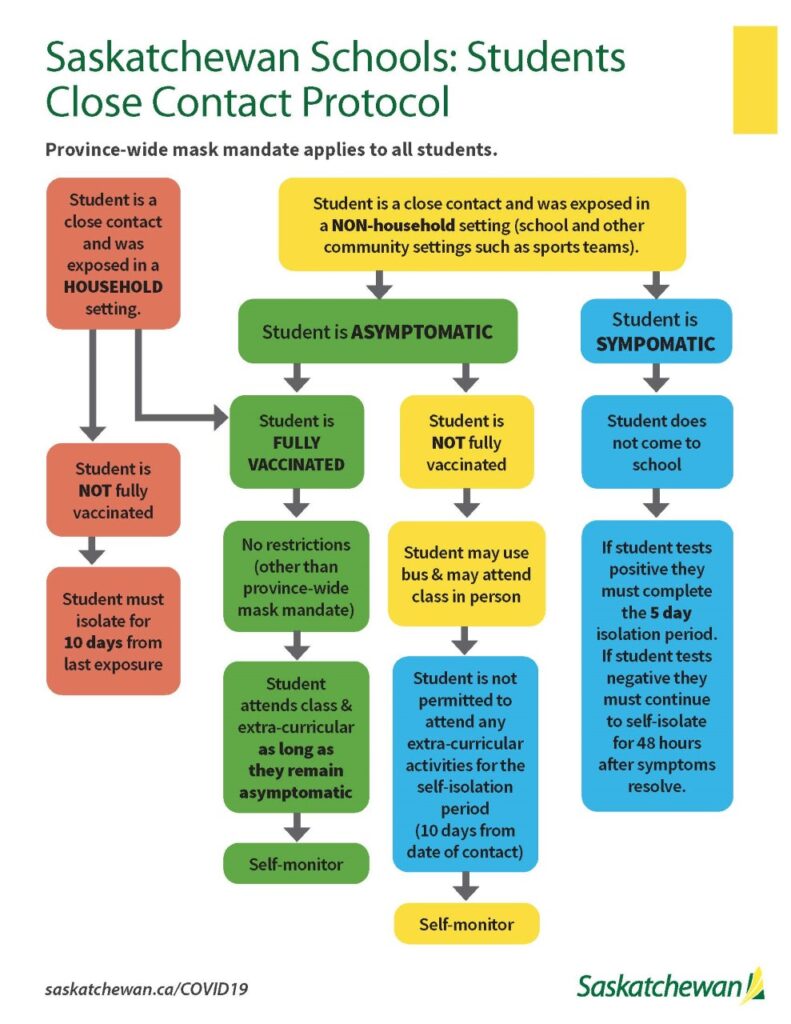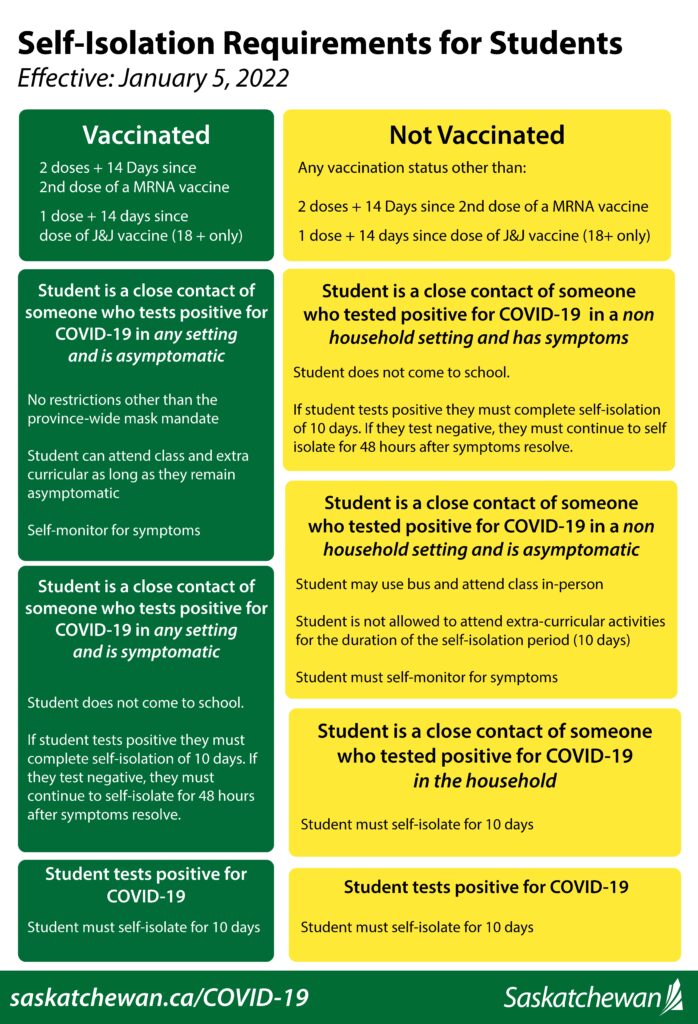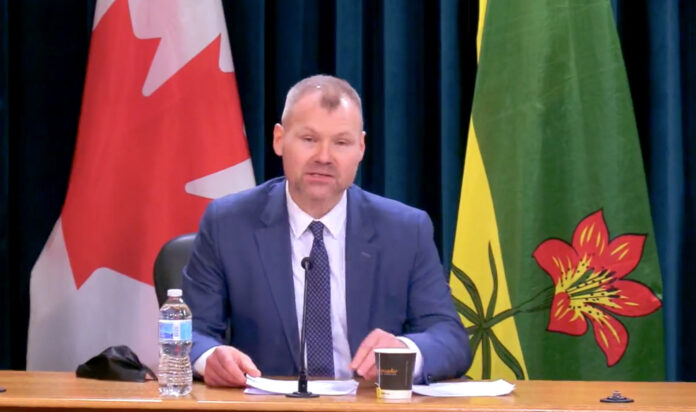With students and staff back in classrooms following Christmas holidays, the province today released the rules regarding those who test positive for COVID, including guidelines for vaccinated and unvaccinated people.
All cases are required to be reported to the school so that cohorts can be informed but how long people must isolate depends on their vaccination status.
“We know that as COVID cases increase in the community and as Omicron becomes the dominant variant in Saskatchewan, we are going to see increased cases in schools. This is our reality,” Education Minister Dustin Duncan said in a media briefing.
Instead of delaying in person learning as some provinces, including Manitoba and Alberta have opted to do, Saskatchewan will focus on masking, rapid test, sanitation, cohorting and encouraging sick students and staff to stay home.
When asked why the province is not delaying the start of school reopening following the break, Duncan said that it is important for students to remain in class if it is possible to do so.
“We are trying to weigh a number of concerns and balance our approach as we look to return students this week to the classroom,” said Duncan. “But the question really was do we require 180,000 students to start the school year on Jan. 3 at home and for what period of time? We felt that we could safely bring students back, knowing there would be disruption.”
Positive COVID-19 test results for school-based staff or students, from either rapid antigen or PCR tests, must be reported to the local school office.
The school will then send a notification to parents/guardians of the class and/or bus cohort that may be considered close contacts.
Fully vaccinated students and staff who are close contacts will follow the current process of self-monitoring.
They are able to attend school and other activities as long as they remain asymptomatic. Fully vaccinated students and staff who test positive are required to self-isolate for five days.
Students who are close contacts to cases in non-household settings (i.e. at school, daycare, public recreation activities) and not fully vaccinated are able to continue to attend school, take the bus and attend child care as long as they are asymptomatic.
They are not permitted to attend any extra-curricular activities for the 10 days self-monitoring period. If the transmission occurred in the household setting, all unvaccinated students are required to isolate for 10 days, including not attending school or childcare.
Staff members (teachers, educational assistants, bus drivers, etc.) who are deemed a close contact and not fully vaccinated must self-isolate for 10 days following last exposure.
The Saskatchewan Federation of Labour and the NDP both say that the provincial plan is far short of what needs to be done.
“As Omicron spreads across the province like wildfire, we need action right now to ensure workers are kept safe,” said SFL President Lori Johb in a news release. “Instead, the government’s plan is to wait until things get worse – a reckless and irresponsible decision that will have disastrous consequences.”
The decision to base policy on current case numbers is not sufficient, said both groups, with the NDP pointing to the leap in recent cases numbers as a gauge of what could be coming.
“Everyone agrees that it is in the best interest of students to have them in school. However, a “wait and see” strategy that risks their safety will not accomplish that. If you know a hurricane is coming, you don’t wait for the storm to hit to board up your windows,” said Carla Beck, the NDP Education Critic.
“The longer you wait and sit on your hands, the fewer options you leave for school divisions and parents, eventually forcing classes online when you no longer have the staffing capacity in schools.”
Both groups made calls for expanded PCR testing, prioritizing booster shots for all front line workers, more PPE, reduced capacities in workplaces, 10 days of permanent and paid sick leave for workers.
The SFL also wants WCB coverage for workers who get COVID-19 from work and then get long term illness.
Chief Medical Officer of Health for Sask., Dr. Shaqib Shahab, said that while other jurisdictions are hospitalizations with Omicron, they are shorter and less serious.
“Other jurisdictions are showing more acute care hospitalizations with shorter lengths of stay and lower pressure on ICU,” he said. “All of those things we’ll be monitoring closely.”
The province said that the interim education plans laid out for the current school year will continue in the next one as well.
The plans focus on reading, mental health and education needs for Kindergarten to Grade 5 students.
Schools have had 1.6 million rapid tests dispersed so far and another 250,000 are to be distributed.




